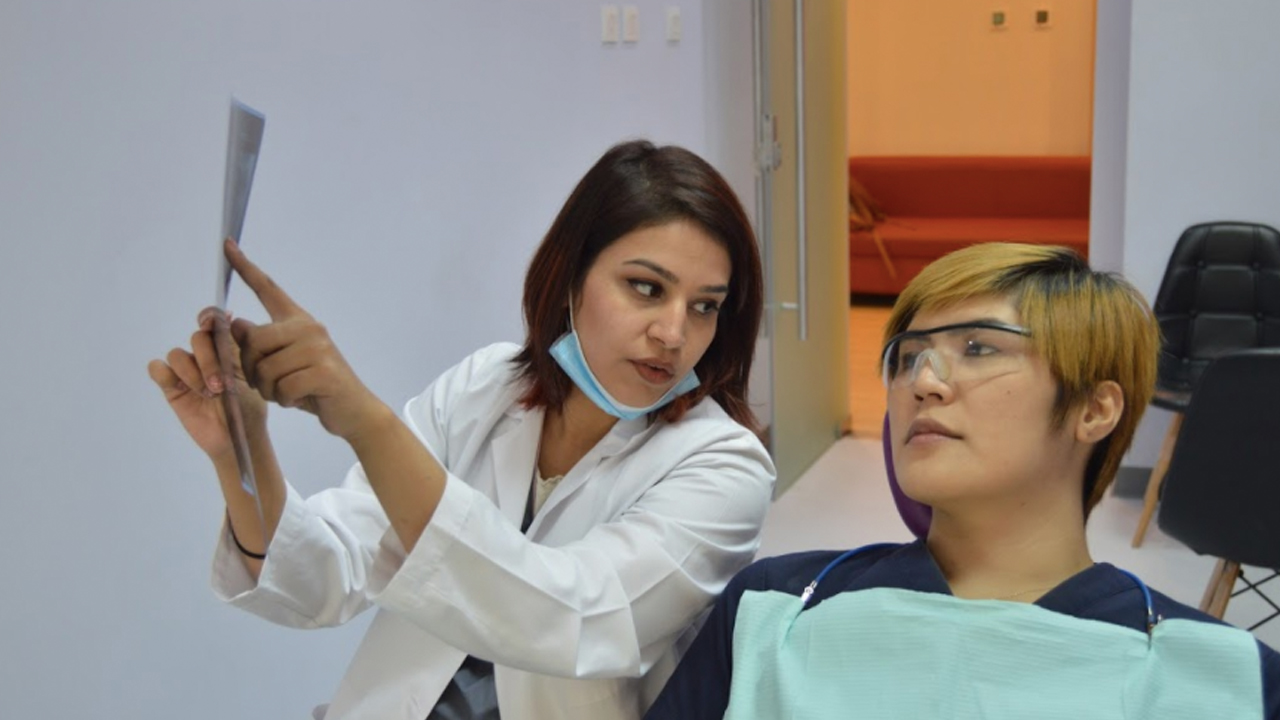Tooth Extractions – All your questions answered!
When I was asked by OH4ALL to write an article based on this topic in a simple, informative and fun way – I found myself thinking how I could possibly pen such a serious topic as “Instructions after a Tooth Extraction” in a fun way. Then it hit me like when your car hits the curb when you park. Ok bad reference let’s try again, like when Spiderman got hit with his spidey senses! Basically – LIGHT BULB moment!
Answer all the questions patients ask before, during and after extractions! Ta-Da! *drum roll please*.
Some patients are shy and keep their thoughts to themselves, others are quite blatant and you also have the occasional funny questions!
Note: Clot is a clump of blood that has changed from liquid to a gel-like state. A clot stops bleeding in an area of injury/wound. It is important to maintain this clot in the area of tooth removal for optimum healing.

So let’s begin…
Why can’t I eat hot & spicy foods?
Heat and heat from spices both cause your blood vessels to expand and increase the amount of blood. If the blood vessels forming the clot expand, naturally more blood flow will cause this clot to crumble/dissolve and bleeding will start again. So it is best to avoid eating hot & spicy foods for at least 24-48 hours after an extraction.
So then what am I going to eat?
“I’m already hungry thinking about all the things I can’t eat!”
You can eat/drink soft, smooth and cold foods such as ice cream, yogurt, bananas, soft cheeses, soft sandwiches, shakes or smoothies (without seeds/nuts), frappuccinos, custard, crème caramel, creamy soups at room temperature, etc. Try to avoid items with small pieces/grains to avoid anything from entering the extraction site hole and causing an infection later on.
Why do I need to take a pain killer now? You already removed the tooth that was hurting.
Once the numbing agent wears out in your mouth, there is always some pain till the clot begins the healing process in the hole from where the tooth was removed. So it’s important to take a pain killer within 30 minutes after the procedure, and then continue it as needed to avoid feeling pain.
Why can’t I smoke? I’m not smoking from the area it was removed.
Smoking is harmful for your dental health just as much as it is for your general health. The chemicals and vapors of smoke cause many dental problems in the mouth but after tooth removal it can cause an extremely painful condition known as “dry-socket”. This occurs due to the chemicals and vapors from the cigarettes/smoking products which dry up the clot and the hole where the tooth was removed from causing severe pain due to the bone drying up instead of healing with a healthy gel-like blood clot.
Don’t use a straw? Wouldn’t it be better to use one?
When you suck in from a straw, it causes negative pressure in the mouth. This negative pressure can dislodge the clot from the hole and bleeding may begin. So it’s best to avoid using a straw for 24 hours.
If I don’t rinse or brush how will I keep it clean?
Well, for 24 hours you must avoid rinsing, spitting out and to brush this area to make sure the blood clot is not disturbed. A healthy long standing blood clot is what will ensure we have proper healing. You can brush the teeth that are away from the extraction site.
A swelling? *insert shocked face* Why?
When someone punches you, the area will naturally swell up to let all the blood supply pool around this area to promote better healing. Similarly when we remove your tooth, we are hurting you in a controlled, pain-free and logical manner so there are CHANCES of a swelling but it’s not always necessary and quite honestly very rarely seen.
Why do I have to take antibiotics when you are removing the tooth?
Yes, we are removing the tooth which is the source of infection; however the infection can only be cured by proper use of antibiotics.
I’m taking antibiotics and there is no pain, so why should I remove my tooth?
Yes, you took antibiotics to remove the infection, however the source of infection still exists and until it is not removed the infection may not fully recover or may come again later on.
What should I do if it bleeds?
Firstly, you should not be stuffing tissue in your mouth to check that it’s bleeding or not. As this will irritate the area more and cause bleeding. If there is bleeding you would taste it in your mouth or physically see drops of blood coming out of your mouth. If this is not the case, it means there is no actual active bleeding; it is just the wound in the healing stages.
If you do taste or see blood, roll up a piece of gauze/cotton big enough to make sure your teeth don’t close – place this in the extraction site and bite down hard/compress on it for 5-10 minutes. Repeat this 3 times till the bleeding doesn’t stop. If the bleeding persists, contact your dentist or an emergency clinic. Most importantly though – listen to your dentist’s instructions to avoid bleeding promoted by you.
It doesn’t hurt me, why should I remove it?
It’s important to understand, that a badly decayed tooth or a remaining root of your tooth in the jaw is a source of infection in the bone and surrounding teeth. Your trash can doesn’t hurt its surrounding objects, but you make sure to empty it out before it starts to rot away and smell bad. Similarly, a dead tooth is eventually going to rot away and cause infections and is best removed before you reach that stage.
It’s going to hurt!?
Well, not exactly because you will be given an injection to locally anesthetize (numb) the area where the tooth removal should take place. Yes the needle prick may pinch you a little, but rest assured the area will be numbed before we begin with the procedure. However a small amount of pressure – literally like someone is just pressing on your tooth – may be felt as the dentist tries to loosen and remove your tooth from the bone, as the injection will take away your sense of pain but only reduce the sense of pressure. This is normal and this is not pain.
It’s not coming out, what’s the problem?
These things take time, if we rush the process it can lead to complications such as breaking of the tooth, tooth being lodged in the wrong direction, post-operative pain, damage to surrounding teeth or gums, etc.
You would wait around more calmly for your nails to dry or your beard be trimmed at the barber – so give us some time as well! Slow and steady wins the race!
It’s so strong it’s not coming out – I told you not to remove it, it’s a good tooth!
No, it’s not a good tooth. Instead it’s the quite opposite. Because the tooth is in a bad condition it is HARDER for us to remove it as it’s not in the “ideal” shape, size, position, etc to be removed and we need to work extra carefully to get a grip of the tooth and to create ways to take out your beloved tooth. That’s why I personally recommend removing wisdom teeth that have started to decay and cannot be restored at your earliest convenience rather than waiting for pain, swelling and breaking.
And lastly – the great big Indian myth which I believe started in some rural village in Gujarat:
I will go blind if I remove my tooth!
Nope, you will not. Rest assured tooth removal is the second most common procedure seen in our field. If this myth was true, half of the world’s population would be blinded. Please be assured this is not likely to happen.
Oh we forgot the funny question:
Does the Tooth Fairy collect permanent teeth too?
LOL. That question we will have to forward to the parents or partners to answer.


